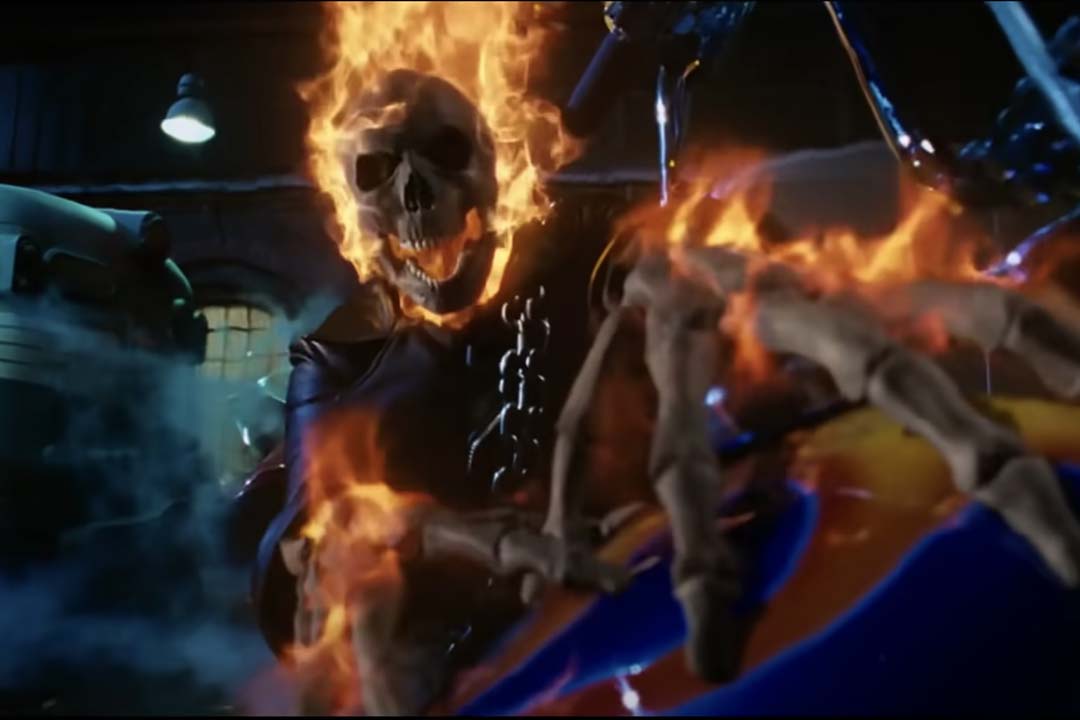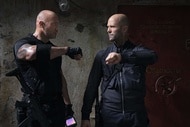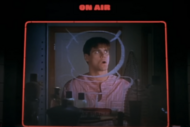Create a free profile to get unlimited access to exclusive videos, sweepstakes, and more!
The 'Ghost Rider' films are a standalone thrill from beyond the MCU - stream the pair on Peacock
Nicolas Cage going wild, flaming skulls, and not a shared universe in sight.

In retrospect, 2007 was a really interesting time to release a new superhero film based on a character never previously adapted for the big screen. The boom of the early 2000s that gave us Spider-Man and X-Men wasn't over exactly, but it did feel like it was maybe losing steam. Meanwhile, the newly empowered Marvel Studios was off working on films that starred B-and-C-list heroes like Iron Man, and Warner Bros. was sticking with what worked, namely more Batman movies.
RELATED: Remembering the time Nicolas Cage channeled voodoo for Ghost Rider: Spirit of Vengeance
Within just a couple of years, the whole landscape would change, and shared universes would become the driving force of superhero cinema, so much so that even relatively self-contained movie universes would do their best to expand and adapt to the new model. We're used to it now, but at the time it was a fascinating and sometimes frustrating thing to watch, and it was made all the more fascinating by the continued existence of standalone comic book adventures that existed completely outside of the new era that was about to launch.
Which brings me to 2007's Ghost Rider and its 2011 sequel, Ghost Rider: Spirit of Vengeance. Though they weren't exactly greeted with widespread critical acclaim upon their release, and very often gain attention now thanks to the presence of star Nicolas Cage, these films exist in our present-day superhero landscape as an interesting bridge between the world that was and the world that is. Built on the sheer visual power of a guy in a leather jacket with a flaming skull for a head, these films arrived just as superhero movies were changing for what feels like forever, and yet all these years later, they still play like their own wild ride.
A lot of this is, predictably, thanks to Cage, who throws his own creative choices through both films like confetti, imbuing even the silliest scenes with a sense that something demonic and unhinged really is going on behind those eyes just before they burn out and are consumed by Ghost Rider's skull. He's always been one of those actors you just want to keep watching, which in many ways made him an ideal candidate for a superhero movie, but with Ghost Rider in particular, there's a catch. After all, for huge swaths of these movies, Ghost Rider is there as a flaming head in a leather jacket, so we can't see Cage's face, and Ghost Rider's voice doesn't sound like him. So, how does the Ghost Rider films get around that dilemma?
Well, sometimes they don't, but when these two movies are really cooking, they succeed by embracing the sheer pulpy power of their source material. These are movies about a motorcycle stuntman who's given a dark power to enact vengeance throughout the world, along with a hellish bike and that signature skull for a face. He then rides around the world fighting rogue demons and battling his own personal agonies, all while looking like a living Halloween decoration. For better or worse, the Ghost Rider films are...well, that.
There's a gleeful embrace of that premise, along with a sense that each film could be the last, and a complete lack of concern for how a fictional universe might be assembled around these ideas. There's nothing wrong with building a shared universe, of course, as years of storytelling have proven, but after more than a decade of MCU continuity, there's also something to be said for self-contained fun. Whatever else the Ghost Rider movies are, they're driven by that sense of fun, that feeling that both films are completely untethered from the changing superhero movie landscape around them. That made them interesting in 2007 and 2011, and it makes them even more interesting now.
Ghost Rider and Ghost Rider: Spirit of Vengeance are now streaming on Peacock.


























